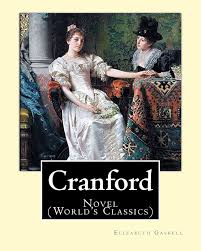
Cranford by Elizabeth Cleghorn Gaskell

Cranford by Elizabeth Cleghorn Gaskell
“Cranford” is a novel by Elizabeth Cleghorn Gaskell, first published in 1851. It is a charming and affectionate portrayal of life in a small English village, focusing on the lives of its predominantly female inhabitants. The novel is known for its gentle humor, keen social observation, and vivid characterizations.
Author: Elizabeth Cleghorn Gaskell
Publication Date: 1851
| EPUB3 (E-readers incl. Send-to-Kindle) | 8.3 MB |
| EPUB (older E-readers) | 8.3 MB |
| EPUB (no images, older E-readers) | 243 kB |
| Kindle | 8.4 MB |
| older Kindles | 8.4 MB |
| Plain Text UTF-8 | 412 kB |
| Download HTML (zip) | 8.4 MB |
Summary
“Cranford” is set in the fictional village of Cranford in the county of Cheshire, based on Gaskell’s own childhood home of Knutsford. The novel is narrated by Mary Smith, a young woman who frequently visits the village and observes the lives of the residents, particularly the older women who maintain the social fabric of Cranford.
Plot Overview
The novel does not follow a single, linear plot but rather presents a series of vignettes and episodes that paint a picture of village life. Key events include:
- Miss Matty Jenkyns: The central character, Miss Matty is a kind-hearted and somewhat timid spinster who lives with her sister Deborah. After Deborah’s death, Miss Matty faces financial difficulties but is supported by her friends and the community.
- Captain Brown: An early episode involves the arrival of Captain Brown and his two daughters. His modern ideas and outspoken nature initially cause a stir among the conservative residents.
- Peter Jenkyns: Miss Matty’s long-lost brother, who ran away to join the navy, eventually returns, bringing joy and reconciliation to the Jenkyns family.
- The Cranford Ladies: The novel details the customs, social events, and small dramas of the Cranford ladies, such as their adherence to strict codes of propriety, their charity work, and their resistance to change.
Themes
- Community and Friendship: The novel emphasizes the importance of community support and the bonds of friendship among the residents of Cranford.
- Social Change: “Cranford” reflects on the impact of social and economic changes on traditional village life, particularly the challenges faced by the genteel poor.
- Gender Roles: The story highlights the lives and resilience of women in a male-dominated society, celebrating their strength, adaptability, and mutual support.
- Gentle Satire: Gaskell uses gentle satire to critique the rigid social conventions and pretensions of the time, often with affectionate humor.
Key Characters
- Miss Matty Jenkyns: The kind and gentle protagonist, whose financial struggles and personal growth are central to the narrative.
- Mary Smith: The narrator, who provides an outsider’s perspective on Cranford and its inhabitants.
- Miss Deborah Jenkyns: Miss Matty’s domineering older sister, whose death precipitates many changes in Miss Matty’s life.
- Captain Brown: A new arrival in Cranford, whose progressive ideas and tragic fate impact the community.
- Peter Jenkyns: Miss Matty’s adventurous brother, whose return brings hope and resolution to the Jenkyns family.



